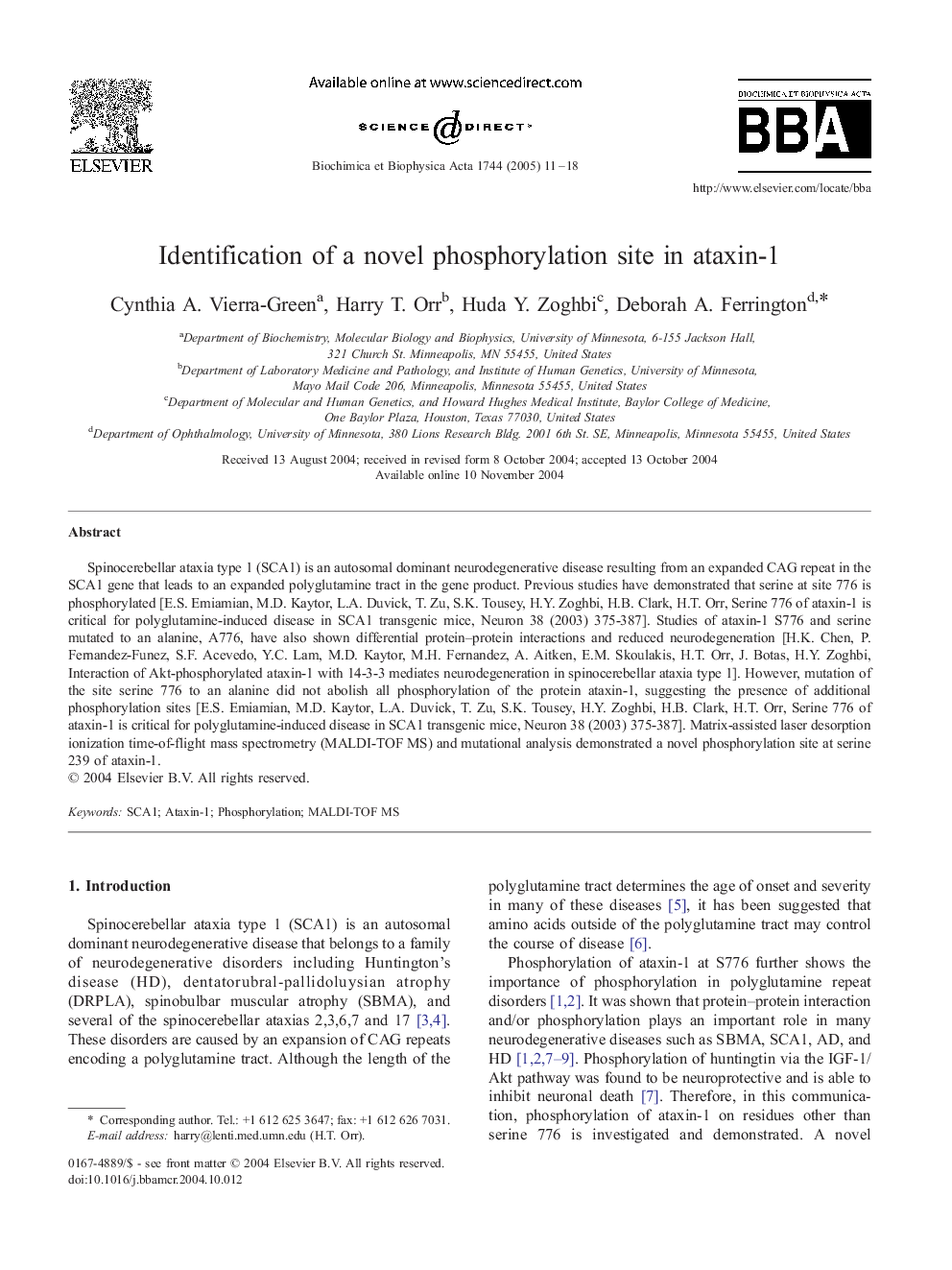| Article ID | Journal | Published Year | Pages | File Type |
|---|---|---|---|---|
| 10803204 | Biochimica et Biophysica Acta (BBA) - Molecular Cell Research | 2005 | 8 Pages |
Abstract
Spinocerebellar ataxia type 1 (SCA1) is an autosomal dominant neurodegenerative disease resulting from an expanded CAG repeat in the SCA1 gene that leads to an expanded polyglutamine tract in the gene product. Previous studies have demonstrated that serine at site 776 is phosphorylated [E.S. Emiamian, M.D. Kaytor, L.A. Duvick, T. Zu, S.K. Tousey, H.Y. Zoghbi, H.B. Clark, H.T. Orr, Serine 776 of ataxin-1 is critical for polyglutamine-induced disease in SCA1 transgenic mice, Neuron 38 (2003) 375-387.]. Studies of ataxin-1 S776 and serine mutated to an alanine, A776, have also shown differential protein-protein interactions and reduced neurodegeneration [H.K. Chen, P. Fernandez-Funez, S.F. Acevedo, Y.C. Lam, M.D. Kaytor, M.H. Fernandez, A. Aitken, E.M. Skoulakis, H.T. Orr, J. Botas, H.Y. Zoghbi, Interaction of Akt_phosphorylated ataxin-1 with 14-3-3 mediates neurodegeneration in spinocerebellar ataxia type 1.]. However, mutation of the site serine 776 to an alanine did not abolish all phosphorylation of the protein ataxin-1, suggesting the presence of additional phosphorylation sites [E.S. Emiamian, M.D. Kaytor, L.A. Duvick, T. Zu, S.K. Tousey, H.Y. Zoghbi, H.B. Clark, H.T. Orr, Serine 776 of ataxin-1 is critical for polyglutamine-induced disease in SCA1 transgenic mice, Neuron 38 (2003) 375-387.]. Matrix-assisted laser desorption ionization time-of-flight mass spectrometry (MALDI-TOF MS) and mutational analysis demonstrated a novel phosphorylation site at serine 239 of ataxin-1.
Related Topics
Life Sciences
Biochemistry, Genetics and Molecular Biology
Biochemistry
Authors
Cynthia A. Vierra-Green, Harry T. Orr, Huda Y. Zoghbi, Deborah A. Ferrington,
